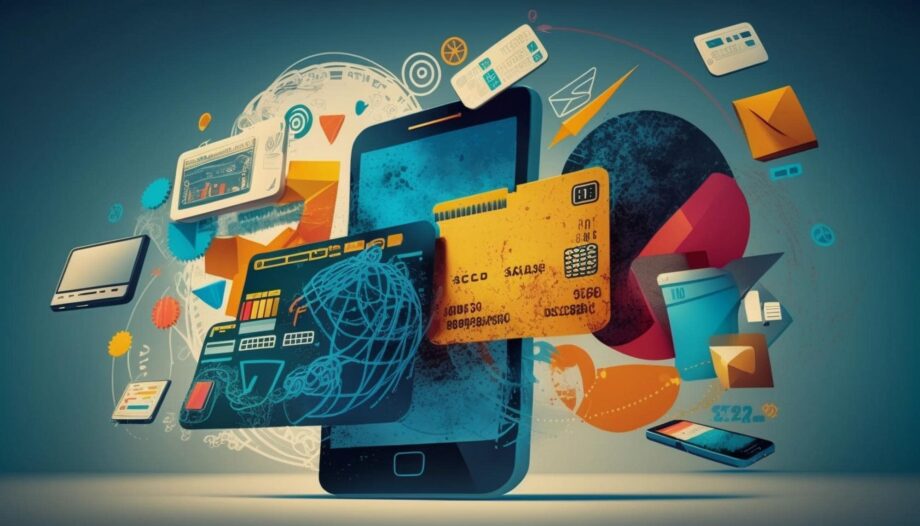Introduction
The financial technology (fintech) sector has grown exponentially in recent years, driven by technological advancements and a growing demand for convenient, secure, and efficient financial services. One of the most impactful innovations in the fintech space has been the development of digital payment systems, which are transforming how businesses and consumers interact with money. From mobile wallets and cryptocurrency payments to contactless transactions, digital payment solutions are not just improving financial services; they are disrupting traditional banking and shaping the future of finance.
As we move into 2025, digital payment systems are rapidly becoming the backbone of global commerce, offering instantaneous transactions, reduced costs, and enhanced security. This article explores how digital payment systems are reshaping the financial landscape and why businesses must adopt these innovations to stay competitive.
The Rise of Digital Payment Systems
The digital payments industry has witnessed explosive growth in recent years. According to Statista, global digital payment revenues are expected to reach $7 trillion by 2026, driven by the growing adoption of smartphones, the proliferation of e-commerce, and increasing internet penetration. The COVID-19 pandemic further accelerated the adoption of digital payments as consumers and businesses sought safer, contactless ways to conduct transactions.
Key Drivers of Digital Payment Growth:
- Smartphone penetration: With over 6.8 billion smartphones worldwide, mobile payments are becoming the preferred method of transaction.
- E-commerce boom: The rise of online shopping has fueled the demand for efficient and secure payment solutions.
- Government initiatives: Countries are increasingly adopting cashless policies and supporting digital payment infrastructure.
- Consumer preference: Customers are seeking faster, more convenient payment methods that offer real-time transactions.
How Digital Payment Systems Are Disrupting the Financial Landscape
1. Mobile Wallets and Digital Banking
Mobile wallets like Apple Pay, Google Pay, and Samsung Pay allow consumers to store payment methods digitally and make purchases through their smartphones. These platforms are revolutionizing both online and in-store shopping, eliminating the need for physical credit cards or cash.
In addition to consumer applications, digital banks or neobanks are also gaining ground. These online-only banks offer full banking services, including savings accounts, loans, and investment products, without the overhead of traditional brick-and-mortar locations. Neobanks like Revolut, Chime, and Monzo provide a seamless banking experience with lower fees and real-time transaction monitoring.
2. Cryptocurrencies and Blockchain Payments
One of the most disruptive innovations in the financial sector has been the rise of cryptocurrencies like Bitcoin, Ethereum, and stablecoins like USDT. These decentralized digital currencies are gaining acceptance as alternative methods of payment, especially for cross-border transactions.
Blockchain technology, the underlying infrastructure of cryptocurrencies, ensures secure, transparent, and immutable transactions, reducing fraud and ensuring the integrity of financial data. Companies like PayPal and Square are already allowing their users to buy, sell, and use cryptocurrencies for everyday purchases.
3. Contactless Payments and Near-Field Communication (NFC)
Contactless payments are becoming increasingly popular in both physical and digital transactions. This method allows consumers to make payments by simply tapping their NFC-enabled devices (smartphones or cards) near a point-of-sale terminal. This technology offers enhanced security (through encryption) and convenience since transactions are completed in a matter of seconds.
The use of QR codes in conjunction with mobile payments is also on the rise, particularly in emerging markets where access to traditional banking infrastructure is limited. With QR codes, consumers can make payments directly from their mobile phones by scanning a code displayed by the merchant.
4. Peer-to-Peer (P2P) Payment Systems
P2P payment platforms like Venmo, Cash App, and Zelle have made it easier for individuals to send and receive money instantly. These platforms, initially designed for casual transactions, are increasingly being used by small businesses, freelancers, and large enterprises to facilitate quick and low-cost payments.
P2P payments have also played a crucial role in financial inclusion by providing unbanked populations with easy access to digital payment solutions. With P2P systems, anyone with a smartphone can access banking services, even in regions where traditional banking infrastructure is scarce.
Benefits of Digital Payment Systems for Businesses
1. Increased Efficiency and Cost Savings
Digital payments eliminate the need for physical cash handling and reduce administrative costs associated with traditional payment methods. By streamlining the payment process, businesses can improve cash flow, reduce transaction fees, and minimize the risks of errors associated with manual payments.
For e-commerce businesses, digital payment systems enable faster checkouts, leading to increased conversion rates and customer satisfaction. Additionally, businesses can integrate payments with their accounting systems to streamline reconciliation and reporting.
2. Enhanced Security and Fraud Prevention
Digital payment solutions, particularly those using cryptography and tokenization, provide enhanced security compared to traditional payment methods. These technologies ensure that sensitive data, such as credit card numbers, is not stored or transmitted during transactions, reducing the risk of fraud.
Two-factor authentication (2FA), biometric verification, and fraud detection algorithms are becoming standard practices in digital payments to safeguard users’ financial information.
3. Access to Global Markets
Digital payment systems enable businesses to reach international customers without the need for currency conversions or intermediaries. Cross-border payments have traditionally been slow and expensive, but blockchain-based payment systems and platforms like TransferWise are changing this. Businesses can now receive payments in multiple currencies instantly and with minimal fees.
4. Real-Time Insights and Analytics
Digital payment systems provide businesses with real-time data and insights into consumer behavior and transaction trends. By analyzing this data, companies can optimize their sales strategies, tailor marketing efforts, and offer personalized promotions to boost customer loyalty.
The Future of Digital Payments: Trends to Watch in 2025
1. AI and Machine Learning Integration
AI and machine learning will play an increasingly significant role in digital payments, particularly in areas like fraud detection, customer service (via AI chatbots), and personalized financial services. These technologies will help businesses enhance the security and efficiency of their digital payment systems.
2. Central Bank Digital Currencies (CBDCs)
Governments around the world are exploring the concept of Central Bank Digital Currencies (CBDCs), which could transform how national currencies are used for digital payments. CBDCs will offer a government-backed alternative to cryptocurrencies, ensuring stability, security, and regulation.
3. Biometric Payments
Biometric payments, which use fingerprint recognition, facial recognition, or iris scanning to verify identity, are expected to become more prevalent. These methods provide enhanced security and convenience, reducing the need for physical cards or passwords.
Conclusion
Digital payment systems are not just reshaping the way we pay — they are fundamentally altering the financial landscape itself. From cryptocurrencies and blockchain technology to mobile wallets and contactless payments, the fintech disruption is transforming consumer behavior, business operations, and global commerce. In 2025, businesses that embrace these innovations will be better positioned to compete and thrive in a rapidly evolving financial ecosystem.
The adoption of secure, efficient, and innovative payment technologies is no longer a choice; it’s a necessity for businesses that want to stay ahead of the curve. As the world becomes more digitally connected, the future of digital payments holds endless possibilities for growth, profitability, and financial inclusion.



